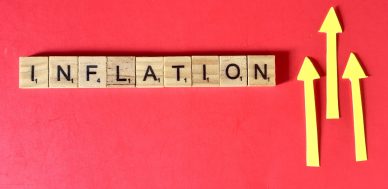Inflation Tamed for Now, But Could Be Much Higher in Coming Years
High inflation could be ahead for the U.S. economy. If this happens, it won’t end well for consumers or investors.
Before going into any details, let’s get some basics out of the way.
Inflation is when the general level of prices in an economy increases. You could also call it diminishing purchasing power or a decline in the value of money.
The Federal Reserve targets inflation in the range of two to three percent per year. What’s considered high inflation for the U.S. economy? Five percent or higher.
At the moment, if you listen to mainstream economists, none of them expect inflation to soar, and the official figures say inflation is under control.
In the first 11 months of 2019, the consumer price index (CPI), an official measure of inflation in the U.S. economy, increased 2.2%. (Source: “CPI for All Urban Consumers (CPI-U),” Bureau of Labor Statistics, last accessed January 9, 2020.)
Skyrocketing Money Supply to Trigger High Inflation
Now, digging in to the details…
In the short term, inflation in the U.S. economy may not be an issue. In fact, it wouldn’t be shocking to see it a dip a little in the near term.
But, in the long term, inflation could become a major problem.
You see, there are a few causes of inflation. One of the biggest ones is when there’s too much money in the supply. This is simple economics: as more money is added to the supply, each dollar becomes worth less. This causes inflation.
In the U.S., sadly, the money supply continues to increase. What’s more troubling is that the money supply is increasing faster than the pace of U.S. economic growth.
Look at the chart below, which plots the money supply in the United States:
(Source: “MZM Money Stock,” Federal Reserve Bank of St. Louis, last accessed January 9, 2020.)
At the beginning of 2010, the total money supply in the U.S. was around $9.5 trillion. At the end of 2019, it was almost $17.2 trillion.
Simple math here: the money supply grew by almost 80% over the decade.
In this time frame, the gross domestic product (GDP) of the U.S. economy grew from $14.7 trillion to $21.5 trillion (to the third quarter of 2019). This is an increase of 46%. (Source: “Gross Domestic Product,” Federal Reserve Bank of St. Louis, last accessed January 9, 2020.)
Why Surging Inflation Matters
Dear reader, it would make sense if the money supply was growing at the same pace as the economy. But it has been much quicker.
I believe this could be a problem over the long term.
As there’s more money in the supply, it essentially means we have monetary inflation. And this could eventually make its way to the prices of the goods that we all consume.
Never forget this: if prices start to jump, it will be American consumers who suffer the most. Their wages aren’t increasing, so higher inflation could really hurt their buying power.
For investors, soaring inflation could really eat up their investment returns. One could even call it an extra tax on investment.
